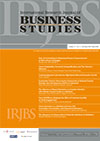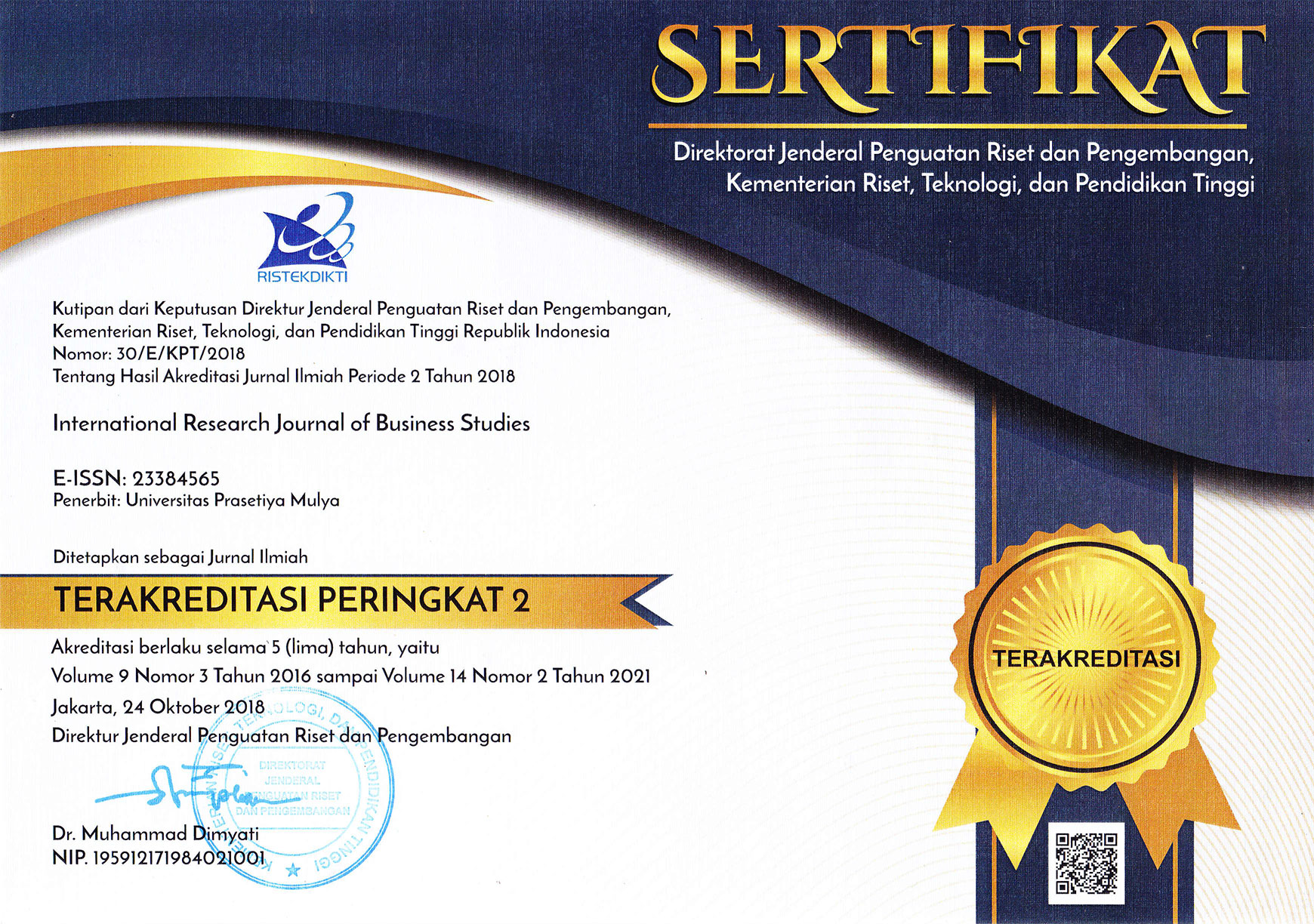How Culture, Commitment, and OCB Affect Employee Performance in Central Lombok
DOI:
https://doi.org/10.21632/irjbs.18.1.53-66Keywords:
Organizational Culture, Organizational Commitment , Employee Performance , Organizational Citizenship Behavior (OCB)Abstract
This study examines the impact of organizational culture and commitment on employee performance, moderated by Organizational Citizenship Behavior (OCB), within the Regional Secretariat of Central Lombok Regency. Employing a quantitative approach with the census method, the research involves all 107 employees as respondents. Data were collected using Likert-scale questionnaires and analyzed through outer model testing, inner model testing, and hypothesis testing. The findings indicate that both organizational culture and commitment positively and significantly influence employee performance. Moreover, OCB enhances these relationships, emphasizing its role in improving performance outcomes. These results underscore the necessity of fostering a robust organizational culture, strengthening employee commitment, and encouraging OCB to optimize performance. This study provides practical insights for human resource management in government institutions by highlighting strategies to enhance employee performance. Additionally, it contributes to the theoretical understanding of the interplay between culture, commitment, and OCB in shaping organizational success.
References
Abdillah, W. (2015). Partial Least Square (PLS): Konsep dan Aplikasinya. Yogyakarta: Andi Offset.
Abdillah, W., & Jogiyanto, H. (2014). Partial Least Square (PLS): Alternatif Structural Equation Modeling (SEM) dalam Penelitian Bisnis. Yogyakarta: Andi.
Andika, R., & Darmanto, S. (2020). The Effect of Employee Empowerment and Intrinsic Motivation on Organizational Commitment and Employee Performance. Jurnal Aplikasi Manajemen, 18(2), 241-251. DOI: http://dx.doi.org/10.21776/ub.jam.2020.018.02.04
Anwar, A., & Hermanto, H. (2020). The influence of competence toward employee performance in Harbormaster's Office and Port Authority. RJOAS, 8(10), 39-44. https://doi.org/10.18551/rjoas.2020-08.05
Fairuzha, S. S., Asmony, T., & Nurmayanti, S. (2024). Analysis of the influence of emotional intelligence and job stress on organizational commitment of general practitioners in private hospitals in Mataram City, Indonesia. Path of Science, 10(8). https://doi.org/10.22178/pos.107-29
Fauziah, S. (2020). Pengaruh komitmen organisasi terhadap efisiensi dan efektivitas kinerja. Jurnal Administrasi dan Manajemen Publik, 12(1), 15–25.
Ghozali, I. (2016). Aplikasi Analisis Multivariat dengan Program IBM SPSS 23. Sidoarjo: Indomedia Pustaka.
Hair Jr., J. F., Hult, G. T. M., Ringle, C. M., & Sarstedt, M. (2019). A Primer on Partial Least Squares Structural Equation Modeling (PLS-SEM). Los Angeles: Sage Publications.
Jufrizen, J., Mukmin, M., Nurmala, D., & Jasin, H. (2021). Effect of Moderation of Work Motivation on the Influence of Organizational Culture On Organizational Commitment and Employee Performance. International Journal of Business Economics (IJBE), 2(2), 86-98. http://doi.org/10.30596/ijbe.v2i2.6710
Jufrizen, J., Rizki, B. O., & Arif, M. (2022). Mediation role of work motivation: Organizational commitment and work involvement on employee performance. International Journal of Business Economics (IJBE), 4(1), 19-33. https://doi.org/10.30596/ijbe.v4i1.10530
Mathieu, J. E., & Zajac, D. M. (1990). A review and meta-analysis of the antecedents, correlates, and consequences of organizational commitment. Psychological Bulletin, 108(2), 171–194.
Meyer, J. P., & Allen, N. J. (1991). A three-component conceptualization of organizational commitment. Human Resource Management Review, 1(1), 61–89.
Meyer, J. P., & Allen, N. J. (1991). Commitment in the workplace: Theory, research, and application. Sage Publications.
Maulani, S., Widiartanto, W., & Dewi, S. (2015). Pengaruh budaya organisasi terhadap kinerja pegawai melalui peningkatan Organizational Citizenship Behavior (OCB). Jurnal Manajemen dan Organisasi, 10(2), 12–25.
Nouriska, M., Saufi, A., & Surati. (2019). The effect of role conflict and emotional fatigue on organizational commitment through job satisfaction (Study on Madrasah Aliyah teachers in Mataram). Scientific Research Journal (SCIRJ), 7(5), 1-13. https://doi.org/10.31364/SCIRJ/v7.i5.2019.P0519648
Organ, D. W. (1988). Organizational citizenship behavior: The good soldier syndrome. Lexington Books.
Podsakoff, P. M., MacKenzie, S. B., Paine, J. B., & Bachrach, D. G. (2000). Organizational citizenship behaviors: A critical review of the theoretical and empirical literature and suggestions for future research. Journal of Management, 26(3), 513–563.
Robbins, S. P., & Judge, T. A. (2017). Organizational behavior (16th ed.). Pearson Education.
Sadeli, J. (2012). The Influence of Leadership, Talent Management, Organizational Culture and Organizational Support on Employee Engagement. International Research Journal of Business Studies, 5(3).
Sartika, R., Astuti, F. D., & Shinta, M. R. (2021). Effect of organizational communication and organizational culture on employee performance at PT. Asuransi Ramayana Jakarta. Journal of Economics and Business Letters, 1(2), 73-81. https://doi.org/10.32479/jebl.11358
Schein, E. H. (1990). Organizational culture. American Psychologist, 45(2), 109-119.
Schein, E. H. (2010). Organizational culture and leadership (4th ed.). Jossey-Bass.
Setyorini, T., Manafe, J.D., & Nino, I.J. (2022). The Role of Organizational Commitment and Organization Culture Toward Job Performance. Jurnal Riset dan Aplikasi: Akuntansi dan Manajemen, 5(3), 389-396. doi.org/10.33795/jraam.v5i3.012
Susmianto, Hermanto, & Nurmayanti, S. (2018). The effect of ethical leadership and organizational culture on work ethos and its impact on organizational performance: A case study in Regency Department of Lands of Lombok Island, Indonesia. RJOAS, 3(75), 48-55. https://doi.org/10.18551/rjoas.2018-03.05
Setyowati, T., Tyas, W. M., & Qomariah, N. (2023). The Role of Organizational Culture and Professionalism in Improving Lecturer Performance with Organizational Citizenship Behavior Based on Spiritual (OCBBoS) as Intervening Variables. Jurnal Aplikasi Manajemen, 21(3), 784-801. DOI: http://dx.doi.org/10.21776/ub.jam.2022.021.03.16
Downloads
Submitted
Accepted
Published
How to Cite
Issue
Section
Categories
License
Copyright (c) 2025 Lalu Agus Muliadi, Lalu Hamdani Husnan, Akhmad Saufi (Author)

This work is licensed under a Creative Commons Attribution-ShareAlike 4.0 International License.
Journal Author(s) Rights
For IRJBS to publish and disseminate research articles, we need publishing rights (transferred from the author(s) to the publisher). This is determined by a publishing agreement between the Author(s) and IRJBS. This agreement deals with the transfer or license of the copyright of publishing to IRJBS, while Authors still retain significant rights to use and share their own published articles. IRJBS supports the need for authors to share, disseminate and maximize the impact of their research and these rights, in any databases.
As a journal Author, you have rights to many uses of your article, including use by your employing institute or company. These Author rights can be exercised without the need to obtain specific permission. Authors publishing in IRJBS journals have comprehensive rights to use their works for teaching and scholarly purposes without needing to seek permission, including:
- use for classroom teaching by Author or Author's institution and presentation at a meeting or conference and distributing copies to attendees;
- use for internal training by the author's company;
- distribution to colleagues for their research use;
- use in a subsequent compilation of the author's works;
- inclusion in a thesis or dissertation;
- reuse of portions or extracts from the article in other works (with full acknowledgment of the final article);
- preparation of derivative works (other than commercial purposes) (with full acknowledgment of the final article);
- voluntary posting on open websites operated by the author or the author’s institution for scholarly purposes,
(But it should follow the open access license of Creative Common CC-by-SA License).
Authors/Readers/Third Parties can copy and redistribute the material in any medium or format, as well as remix, transform, and build upon the material for any purpose, even commercially. Still, they must give appropriate credit (the name of the creator and attribution parties (authors' detail information), a copyright notice, an open access license notice, a disclaimer notice, and a link to the material), provide a link to the license, and indicate if changes were made (Publisher indicates the modification of the material (if any) and retain an indication of previous modifications.
Authors/Readers/Third Parties can read, print and download, redistribute or republish the article (e.g. display in a repository), translate the article, download for text and data mining purposes, reuse portions or extracts from the article in other works, sell or re-use for commercial purposes, remix, transform, or build upon the material, they must distribute their contributions under the same license as the original Creative Commons Attribution-ShareAlike (CC BY-SA).
This work is licensed under a Creative Commons Attribution-ShareAlike 4.0 International License.








